Emergency Corn by Christina Stechishin
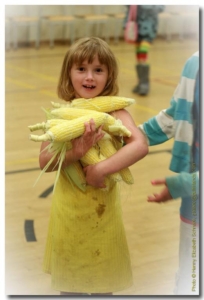 When I volunteered to provide corn on the cob for the Community Picnic on behalf of the Galiano Emergency Program, little did I realize how much was involved. It wasn’t just a matter of arranging for the purchase of the corn – it was also planning for the shucking, cooking, and serving of the ears, as well as arranging for disposal of the cobs and husks.
When I volunteered to provide corn on the cob for the Community Picnic on behalf of the Galiano Emergency Program, little did I realize how much was involved. It wasn’t just a matter of arranging for the purchase of the corn – it was also planning for the shucking, cooking, and serving of the ears, as well as arranging for disposal of the cobs and husks.
Well, thanks to the experience and resourcefulness of Janice and Alison, I now know about bringing tarps and getting the children to make the corn shucking into a contest, arranging for BIG pots and cooks (of any size) for cooking, having runners available to scoot the shucked corn to the cooking pots as quickly as possible, getting the delicious cooked corn into people’s tummies equally rapidly, and recycling the husks and cobs into compost Buying the corn is definitely the easy part! In addition to Janice and Alison, my heartfelt thanks go to the Daystar Market (suppliers of the sweetest corn imaginable), Mary and Don Thomson (scooters extraordinaire), Eileen Beaudine (contest super-organizer and official cob counter), Dana Weber (brilliant not only with baking wonderful bread but with cooking corn to perfection as well) and Barry New (community compost expert).
After all the corn scurrying was over, we were all able to sit down and enjoy a fabulous potluck with super pesto and/or salsa and chips, devilled eggs, fabulous salads, eggplant casseroles, macaroni casseroles, rolls, pies, cookies, berries, homemade ice cream, and a whole bunch of other things that were gone before I even got there ☺ The empty plates were dead giveaways of truly tasty concoctions. And all through this, we had great music provided by Jenny Brooklin alternating with Greg Gammon. But I think that everyone would agree that the activity which topped everything was the Great Zucchini Race, emceed and conducted by Thomas Schnare and capably judged by Dave Ages and Mike Hoebel. The engineering, creativity and just plain fun were unbelieveable.
Well done organizers – I can hardly wait until next year!
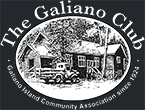
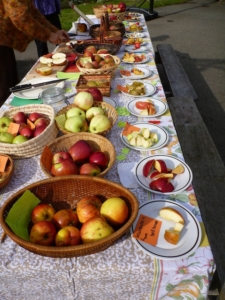 Applefest Returns!!
Applefest Returns!!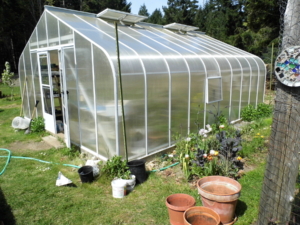 The cold and rainy spring in the unheated greenhouse thwarted our first attempts to grow transplantable vegetable and herbal seedlings in April and May. Undaunted, and with the help of Martine and Janice,we abandoned our miniature and unhealthy starts and planted Martine’s new seedlings. By mid June we were inundated with fresh herbs and furthermore, as of today we have harvested many varieties of tomatoes from Leo and Rosemarie’s starts, cucumbers from seeds , more herbs and are awaiting the ripening of seeded watermelon and cantaloupe.
The cold and rainy spring in the unheated greenhouse thwarted our first attempts to grow transplantable vegetable and herbal seedlings in April and May. Undaunted, and with the help of Martine and Janice,we abandoned our miniature and unhealthy starts and planted Martine’s new seedlings. By mid June we were inundated with fresh herbs and furthermore, as of today we have harvested many varieties of tomatoes from Leo and Rosemarie’s starts, cucumbers from seeds , more herbs and are awaiting the ripening of seeded watermelon and cantaloupe.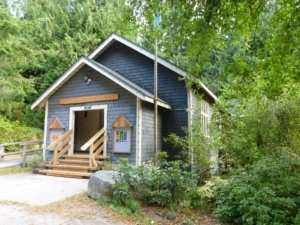 In August, Bob Boyechko and his crew removed 2 old roofs from the South Galiano Community Hall and replaced them with a new roof. The work took about 5 days during the hottest week of the year. No rot was found under the old roofs and the new roof was expertly installed along with new flashings.
In August, Bob Boyechko and his crew removed 2 old roofs from the South Galiano Community Hall and replaced them with a new roof. The work took about 5 days during the hottest week of the year. No rot was found under the old roofs and the new roof was expertly installed along with new flashings.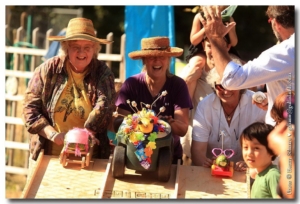 Everyone is invited to Galiano’s first annual Zany Zucchini Races that will be held at the Community Picnic on September 25th at the School/Activity Centre. Ret. Captain Thomas Schnare is co-ordinating the exciting races that will be judged by Mike Hoebel and Dave Agnes.
Everyone is invited to Galiano’s first annual Zany Zucchini Races that will be held at the Community Picnic on September 25th at the School/Activity Centre. Ret. Captain Thomas Schnare is co-ordinating the exciting races that will be judged by Mike Hoebel and Dave Agnes.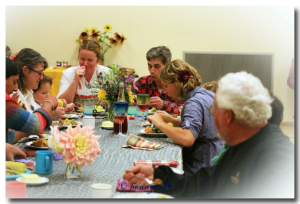 Sunday September 25th from 1-4pm. Gather at the School/Activity centre with friends and neighbours to celebrate the harvest. Potluck lunch starts at 2pm. This year there will also be a Pie Baking contest (bring your best pie to take home the ribbon!) plus Zucchini races (just find your biggest zucchini, add wheels and line up at the start line!), live music from talented locals and a kids vs. parents soccer game. Bring your own plates and cutlery to make clean up easier. So far the following organizations are participating: Library Society, Galiano Naturalists, Chamber of Commerce, Parks & Rec, Lions Club, Galiano Club, Emergency Prepardness Committee, Health Care Society, Galiano Community Food Program and Parents Advisory Committee, Galiano Playgroup Society, North Galiano Fire Protection Society, North Galiano Community Association, Activity Centre plus a number of individuals. But we still need a few more volunteers to help with this fun event.
Sunday September 25th from 1-4pm. Gather at the School/Activity centre with friends and neighbours to celebrate the harvest. Potluck lunch starts at 2pm. This year there will also be a Pie Baking contest (bring your best pie to take home the ribbon!) plus Zucchini races (just find your biggest zucchini, add wheels and line up at the start line!), live music from talented locals and a kids vs. parents soccer game. Bring your own plates and cutlery to make clean up easier. So far the following organizations are participating: Library Society, Galiano Naturalists, Chamber of Commerce, Parks & Rec, Lions Club, Galiano Club, Emergency Prepardness Committee, Health Care Society, Galiano Community Food Program and Parents Advisory Committee, Galiano Playgroup Society, North Galiano Fire Protection Society, North Galiano Community Association, Activity Centre plus a number of individuals. But we still need a few more volunteers to help with this fun event.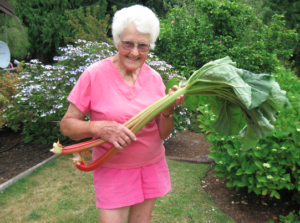 He who plants a tree loves others besides himself – English Proverb
He who plants a tree loves others besides himself – English Proverb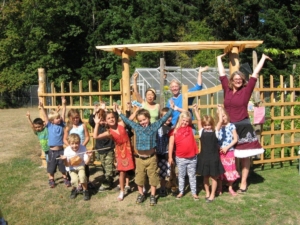 Part of this project was completed with the expanded garden at the school and the raised beds built this past summer by Leo Engelmann and Richard Nathans. New fencing and a new gate was put up by Patrick Sherry and Leo. The vegetables being grown in the raised beds will be used for the Soup for Seniors’ initiative. Another part of this project involves elders working with the school children to identify and inventory the fruit trees and orchards on the island. The kids will be involved in mapping the locations of orchards, helping to identify trees, investigating the history and culture of fruit trees on Galiano. In the Spring we will use this information to do some grafting workshops and ensure that the magnificent fruit trees on the island are “re-born”.
Part of this project was completed with the expanded garden at the school and the raised beds built this past summer by Leo Engelmann and Richard Nathans. New fencing and a new gate was put up by Patrick Sherry and Leo. The vegetables being grown in the raised beds will be used for the Soup for Seniors’ initiative. Another part of this project involves elders working with the school children to identify and inventory the fruit trees and orchards on the island. The kids will be involved in mapping the locations of orchards, helping to identify trees, investigating the history and culture of fruit trees on Galiano. In the Spring we will use this information to do some grafting workshops and ensure that the magnificent fruit trees on the island are “re-born”.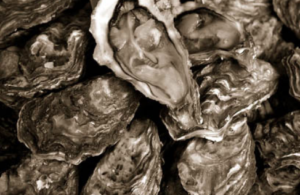 Little did I know what I was in for when I responded to the email invitation from the Food Program : “Come out for a walk with Dan Persyko and friends to marvel at the abundance of food at its source. The traditional First Nations site at Montague Harbour is the ideal place to learn about living close to the land and sea. Bring shovel, a bucket, a bowl, and fork. 4:30 Thursday, June 9th, 2011”.
Little did I know what I was in for when I responded to the email invitation from the Food Program : “Come out for a walk with Dan Persyko and friends to marvel at the abundance of food at its source. The traditional First Nations site at Montague Harbour is the ideal place to learn about living close to the land and sea. Bring shovel, a bucket, a bowl, and fork. 4:30 Thursday, June 9th, 2011”.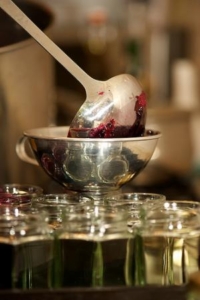 When the opportunity to go to a Canning workshop with one of Bernadin’s top chefs arose, I jumped at the chance. I know a lot about canning, my Grandma taught me to make Jam almost 30 years ago, but there’s always something new to learn. As it turned out – I learned a lot. The biggest realization was that I’m a bit of a jam snob! I make jam the old fashioned way. Long boil, with thermometers, copper pots, and an understanding of the various pectin levels of different fruits at different times of the year. I consider myself an expert at the obscure wrinkle test. And for the last few years I’ve taught “old-school” jam classes through the Galino community Food Program, making hundreds of jars of jam with participants. My Grandmother taught me never to waste food, and I have tried to pass some of those food preserving skills on.
When the opportunity to go to a Canning workshop with one of Bernadin’s top chefs arose, I jumped at the chance. I know a lot about canning, my Grandma taught me to make Jam almost 30 years ago, but there’s always something new to learn. As it turned out – I learned a lot. The biggest realization was that I’m a bit of a jam snob! I make jam the old fashioned way. Long boil, with thermometers, copper pots, and an understanding of the various pectin levels of different fruits at different times of the year. I consider myself an expert at the obscure wrinkle test. And for the last few years I’ve taught “old-school” jam classes through the Galino community Food Program, making hundreds of jars of jam with participants. My Grandmother taught me never to waste food, and I have tried to pass some of those food preserving skills on.